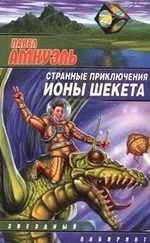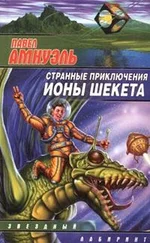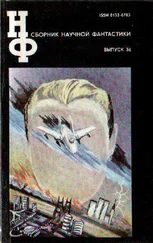A continuum that, as per all utopias, can never achieve its stated goals poses special existential difficulties. The whole point of reinhabiting the ancient Jewish homeland was to avoid the Territorialist approach that would have rendered East Africa, Argentina, or upper New York State refuges for stateless Jews. [18] Very early on, the Zionist movement was almost split by a conflict between two opposing views: the so-called Territorialists held that the Jewish Problem required an immediate solution and were willing to accept any territory that may be offered, notably British Uganda. The Zion’s Zionists faction, on the other hand, insisted on the Land of Israel as the only possible place in which the desired solution could be implemented. Herzl himself initially supported the former view but then yielded to the Zion’s Zionists to prevent the dissolution of his fledgling movement.
The Land of Israel, in whole or in part, was not incidental to this process of repatriation. It was essential.
* * *
Israeli readers have distinguished themselves as among the most voracious anywhere. But for them, experimentalism, egotism, and whimsy, which they had disdained before the establishment of the state in 1948, remained a non-starter afterwards. The self-appointed literary gatekeepers remained in place and continued to rule the roost as before. There was still no tolerance for cultural (never mind personal) deviancy. There could certainly be no room for apocalyptic musings, especially since these were not the stuff of fantasy but of hard-core reality, and therefore intolerably discomfiting. As SF/F author Larry Niven once said, “I don’t know how to frighten Israelis.” Under such circumstances, notes Hareven, Franz Kafka himself never would have forged the literary career he chose had he fulfilled his dream and settled in the Land of Israel. [19] Hareven, “What Is Unimaginable?” 46. This, however, has not stopped allohistorical speculation on the matter, as in “What If Frank Had Immigrated to Palestine,” in Gavriel D. Rosenfeld, What Ifs of Jewish History (Cambridge: Cambridge University Press, 2016), 187–214. Larry Niven quote from a panel discussion on the Doomsday Asteroid at the Weizmann Institute, Rehovoth, Israel, March 20, 2007, according to editor E. L.’s recollection.
As for importation, there were a few notable exceptions; some scientific romances by H. G. Wells, Jules Verne, Edgar Allan Poe, Arthur Conan Doyle, H. Rider Haggard, and Edgar Rice Burroughs did slip past the watchtowers (most of them directly to the bookshelves dedicated to young readers), as did some works by mainstream authors, such as Orwell’s 1984 or Huxley’s Brave New World , as well as short stories by André Maurois, on the strength of those writers’ reputations. But commercial literature, popular fiction, and dime-novel subgenres remained, for ardent Zionists, unfit for serious people bent on building a nation.
How, then, do we get from all this to a solid compendium of Israeli speculative fiction? Like so many things big, shiny, and, to skeptical Israeli eyes, somewhat preposterous, SF/F initially came from America. It arrived first in the guise of 1950s B-movies and then in a quirky trickle of Hebrew translations that often bankrupted their overly optimistic purveyors. A trio of short-lived magazines published during the late 1950s and early 1960s met the same end.
At the time, even translated modern SF novels were few and far between, appearing almost exclusively in the Hebrew version of shundt called roman za’ir (tiny novel)—in other words, pulp literature. Original works were unheard of, and fantasy existed only on children’s bookshelves. Asimov? Clarke? Heinlein? Not a chance. Science fiction was so rare that no one even knew quite what to call it. Israeli fans would spend a generation arguing the respective merits of mada bidioni (fictional science) and mada dimioni (imaginary science). The former ultimately gained the wider currency (although some continue to argue against it).
In the early sixties, one of the editors (E. L.) fell upon a Hebrew translation (in pulp format) by the late Amos Geffen of Robert Heinlein’s The Puppet Masters . Fascinated, he started looking for more of its ilk, but to little avail. It was only when he went to London in 1970 for his graduate studies that he discovered the wealth of modern SF/F. The realization that all one needed to do in order to get the kind of books one liked was to go ’round the corner to the nearest W. H. Smith’s proved a life-changing revelation.
The only putatively Israeli SF to emerge during that period came from the pen of Mordecai Roshwald. This Polish-born writer and academic, who lived in Mandatory Palestine/Israel from 1933 to 1955, published his apocalyptic opuses, the hair-raising nuclear war-themed Level 7 (1959) and the satirical A Small Armageddon (1962), in the United States and England, respectively. These generally well received novels, written abroad and not directly reflective of his Israeli experiences, have yet to be translated into Hebrew.
Two Israelis who ultimately defied these strictures by experimenting with science fiction—poet and filmmaker David Avidan and prose writer Yizhak Oren—consequently found themselves marginalized and were only posthumously granted critical reconsideration.
The sea change would come, however, during the mid-1970s. Between mid-1967 and late 1973, Israel fought three major wars, not to mention numerous border clashes with terrorists and cross-border Israeli retaliatory raids. The Six-Day War in June 1967 filled most Israelis with arrogant pride, not to say hubris, and fueled no dearth of messianic illusions. To many, the Zionist dream was realized in full during those six short days—not coincidentally, some would say, the same amount of time it took God to create the universe. Conceivably, the time had come to stride forward. Having become “a regional superpower,” Israel could now afford to normalize its society, economy, and culture.
This too proved an outright and dangerous fantasy, as demonstrated by the gruesome War of Attrition of 1968–70, followed by the near-disastrous Yom Kippur War of October 1973. Israel’s superpower illusions lay shattered. More importantly, the traditional hegemony had clearly failed its faithful adherents, not to mention the country as a whole. Even the military, the consensual symbol of social cohesion, national unity, pride, and sense of mission, had failed to deliver on all its promises. Authority was now up for grabs.
The immediate consequences were political. In 1977 the Labor Party, which had long held the helm of the Yishuv and then the State of Israel, lost the general elections. But fracture lines spread much farther than the political arena. The national economy changed, evincing occasionally dizzying levels of growth and an increase in conspicuous consumerism. The electoral demise of the Labor Party led to a shift from socialist to liberal economics and, though lifting the economic prospects of many, to a growing inequality in income distribution. A once cohesive Israeli society broke down into competing tribes (as, for instance, left-wing idealists, right-wing nationalists, Orthodox settlers, Ultra-Orthodox Jews, freebooting liberals, and Israeli Arabs of various religious and political persuasions. Most of them, needless to add, are further split among themselves). Education, too, became more fragmented and commoditized. Culture, ever both the reflection and the harbinger of social change, followed suit.
Traditional hegemony in culture, as in politics, rapidly lost ground. Diktats from above about what was proper in literature, the stage, music, and the visual arts were losing their authority. Weeds began to proliferate in the cracks. Political satire, for example, hitherto moderate and well behaved, now became vicious. The stage was thus set for a more widespread appearance of SF/F in Israel, first of all in translation (a corps of native writers was yet to emerge). But from the mid-1970s on, mainstream Israeli publishers infused bookstores with some several hundred fairly expensive translations of commonly accepted genre standards.
Читать дальше






